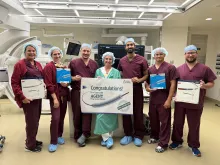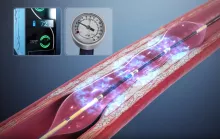Coronary artery disease
- For all other requests:
- 1-800-777-8442
If you’re newly diagnosed with CAD or your condition has worsened, it’s important to get the right treatment, right away.
By the time you have symptoms such as angina (chest pain) or shortness of breath, your condition may be fairly advanced. This means you have enough plaque built up in your coronary arteries to reduce blood flow and oxygen to your heart. And even a partially blocked coronary artery increases your risk of heart attack, heart failure, and stroke.
The University of Iowa Heart and Vascular specializes in treating the most difficult and complex CAD cases. This includes a dangerous type of CAD called chronic total occlusion, or CTO (a coronary artery that’s been completely blocked for three months or longer).
Whether you’re looking for a nonsurgical way to improve your heart health or you need traditional or less invasive heart surgery, we offer the care and support you need to feel better and live longer.
Coronary artery disease diagnosis
If you or your provider are concerned about your chest pain or shortness of breath, you should see a cardiologist. A cardiologist can check to see whether your symptoms are caused by a problem with your coronary arteries.
The UI Heart and Vascular Center offers all the tests you might need to identify CAD and rule out other medical conditions that can cause similar symptoms. These tests include:
- Cardiac catheterization: We reach your heart by guiding hollow, flexible tubes (catheters) through your blood vessels. Once the catheter is in place, we inject a special liquid (contrast agent) to see how well blood flows through the coronary arteries.
- Cardiac CT scan: We capture many moving images of your heart and coronary arteries and combine them into a 3D model.
- Coronary calcium scan: Also known as a calcium score test, this procedure measures the amount of calcium built up in your coronary arteries. It’s used for people who have a moderate risk of heart disease but don’t yet have cardiovascular symptoms.
- Echocardiogram: We use sound waves (ultrasound) instead of radiation to take pictures of your heart and blood vessels.
- Electrocardiogram: We record the heart’s electrical signals to see if your chest pain is caused by narrowed or blocked coronary arteries.
- Stress test: You’ll have an echocardiogram or nuclear test while at rest, then again after walking on a treadmill, riding a stationary bike, or receiving special medication. This helps us see if your symptoms get worse during physical activity.
These tests help us confirm CAD and show us how advanced it is.
Coronary artery disease treatment from UI Health Care
The treatments you’ll need for CAD depends on several factors. These include the severity of plaque build-up in your coronary arteries and the severity of your symptoms.
Nonsurgical CAD treatments
If you have slight narrowing of the arteries and mild symptoms, nonsurgical treatments may be all you need to feel better. These include:
- Lifestyle changes: You can significantly improve your cardiovascular health and prevent CAD from getting worse by making certain lifestyle changes. These include exercising, losing weight, quitting smoking, and getting Type 2 diabetes under control.
- Cardiac rehab: Our medically supervised cardiac rehab program, which includes a 12-week customized exercise plan, provides the support you need to strengthen your heart. You can also take part in educational classes, smoking cessation classes, and one-on-one counseling with our registered dietitians.
- Medication: Certain prescription medicines can help you lower your blood pressure or cholesterol. Others help prevent chest pain, plaque build-up, or blood clots.
Minimally invasive CAD procedures
If you have a partial blockage in a coronary artery, and your symptoms make it hard to get through the day, you may need more advanced treatment.
UI Heart and Vascular Center interventional cardiologists offer several minimally invasive treatment options. These options, which are also known as percutaneous coronary interventions (PCIs), are available to patients for whom surgery would be too risky. They include:
- Angioplasty: We guide a catheter into the problem artery and inflate a special balloon. The balloon flattens any plaque and widens the artery so blood can flow through more easily.
- Atherectomy: We use a catheter fitted with a tiny rotating blade (or laser) to get rid of thickened plaque inside the artery.
- Stent placement: We use a catheter to insert a tiny mesh tube (stent) inside a narrowed artery. Once the stent is in place, it keeps the artery propped open.
CAD surgery
For some people with advanced CAD, surgery is the best treatment option. If you’re eligible for surgery, you’ll undergo a procedure called coronary artery bypass grafting (CABG).
During CABG, we create a detour (bypass) that allows blood to flow around the blockage. We either transplant a vein from somewhere in your body, or create an artificial one from synthetic material.
Our heart surgeons offer traditional CABG (open heart surgery) and minimally invasive and robot-assisted CABG.
A lifesaving option for chronic total occlusion
Until recently, the only treatment for CTO was CABG surgery. But for some people with CTO, CABG is too risky.
We offer a new, minimally invasive approach for people who aren’t healthy enough for open heart surgery. It’s often referred to as CTO PCI.
New surgical techniques and miniature devices (guide wires) can reach a blockage through tiny blood vessels once considered too small to pass through. This allows us to place stents on both sides of the blockage, permanently widening the artery.
We can also perform this procedure on people whose hearts are weakened by CTO. In these cases, we use special heart pumps that keep the blood circulating during surgery, so the heart doesn’t have to work so hard.
Our Care Team

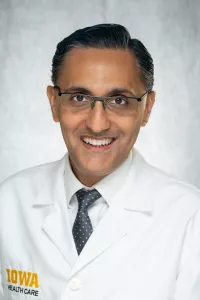
- Heart and Vascular



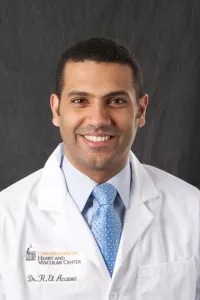




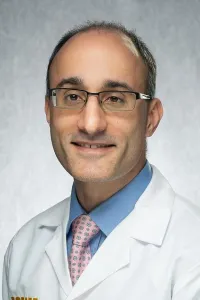
- Heart and Vascular
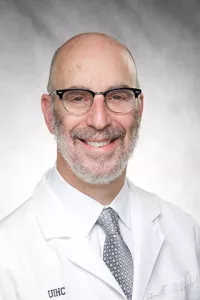

- Heart and Vascular



- Heart and Vascular
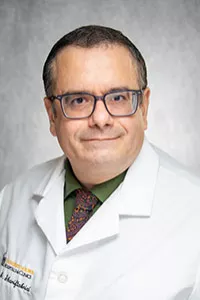
- Cancer
- Radiology
Looking for a coronary artery disease specialist?
Locations and Offices



Patient Stories
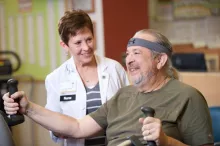
Related News
